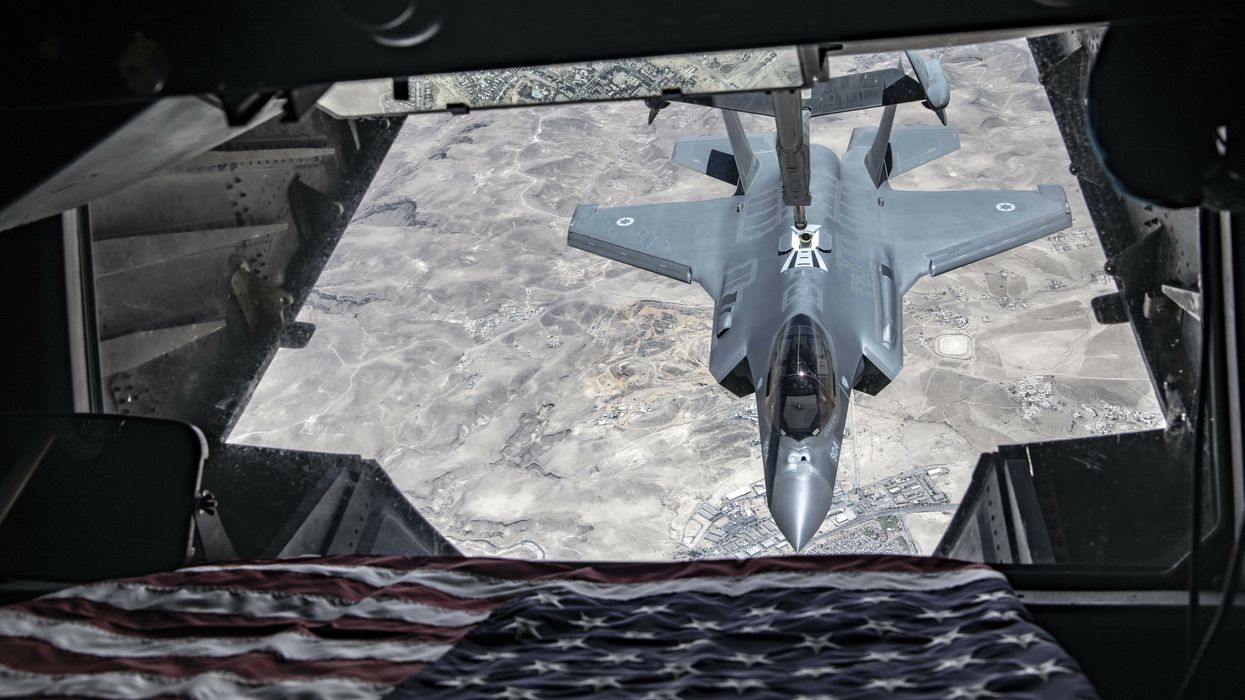U.S.-Russian tensions continued to rise this week as two U.S. MQ-9 Reaper drones were damaged by flares released from Russian jets over Syria.
The first incident on Sunday damaged the drone’s propeller but did not cause it to crash, but it echoed a similar episode over the Black Sea in March when the drone crashed after a collision with a Russian jet. Another incident occurred Wednesday over northwest Syria and resulted in damage to one of the drone’s wings.
That makes for a reported total of six incidents involving Russian and American aircraft in July. The confrontations were a reminder of the potential dangers of U.S. and Russian forces operating in close proximity to each other in Syria, and they raise the question of why U.S. forces are still operating in a country where they have no legal mandate.
Russian and American forces have been operating in and over Syria at the same time since the 2015 Russian intervention on the side of the Syrian government, and for most of that time they have adhered to deconfliction rules designed to avoid accidents between them. The latest episodes, along with other incidents earlier in the year, suggest that these rules are beginning to break down as the war in Ukraine damages U.S.-Russian relations everywhere else.
For the record, the Russian military also claims that U.S. aircraft have been repeatedly violating the deconfliction rules and faults the U.S. for the incidents. It is possible that these incidents will remain relatively isolated ones, or they could be a prelude to increasing hostility and even direct conflict.
The focus in much of the media coverage of these incidents has been how the U.S. might respond, but this misses the more important question of why there are still U.S. military aircraft flying over Syria years after the defeat of the Islamic State (ISIS). The official justification is that the U.S. is assisting in targeting the remnants of ISIS. However, the goal of seeking the group’s “enduring defeat” has locked the military into an open-ended mission that has little, if anything, to do with U.S. security.
Pursuing that mission has also meant that U.S. forces are either targeted on the ground by militias linked to Iran or getting into close calls in the air with Russian planes. The U.S. stands to gain very little from its military operations in Syria, and the risks of escalation with both Russia and Iran are a serious concern. Keeping U.S. forces in Syria is not worth continuing to take those risks. It would make much more sense for the U.S. to pull its forces out of Syria, but we know that there will be stiff resistance in Washington to leaving when the U.S. presence is being directly challenged.
It would be wiser to get out of Syria now before there is an incident that claims lives, because in that case the danger of escalation will increase, and it will be much more difficult to leave if that should happen. Fortunately, there have been relatively few U.S. personnel injured and killed as a result of past confrontations, but there is no reason for the U.S. to keep pushing its luck. No one should be expected to put his life on the line for a muddled, unauthorized mission in a place where the U.S. has so little at stake.
There is a perverse idea in Washington that the U.S. should not pull its troops out of another country even when their continued presence no longer serves U.S. interests. The fear of creating a “vacuum” that will be filled by adversaries paralyzes Washington and traps it into maintaining deployments whose security benefits are negligible or non-existent. When policymakers accept this idea, it prevents the U.S. from cutting back on unnecessary deployments and contributes to spreading U.S. resources and manpower too thin in too many places. It also puts U.S. forces at risk in places where they have no good reason to be.
As Ben Friedman of Defense Priorities has explained, the fear of leaving behind a “vacuum” is misplaced: “Today, the places U.S. troops are sent to stabilize tend to be strategically unimportant or irrelevant—that is, not valuable territory for any outsider to control. Therefore, foreign efforts to exploit any potential vacuum created by a U.S. exit will not harm U.S. security.”
It did not matter to U.S. security who governed eastern Syria fifteen years ago, and it doesn’t matter now. The U.S. can easily afford to leave Syria, and the costs of staying exceed any discernible benefit. If the costs are now going to include routine confrontations with Russian and Iranian-backed forces, they are even higher than they were before.
Given the intense anti-Russian mood in Washington, the drone incidents will probably cause the administration to recommit to the mission in Syria and possibly even send additional reinforcements. As it is, the U.S. is already expanding its footprint in the Middle East with more troops and planes headed for the Persian Gulf. All of this is a mistake and keeps the U.S. overinvested in the region. The U.S. absolutely should not send any additional forces to Syria, but instead it should be looking for ways to get them out safely.
In the meantime, the U.S. and Russian militaries must work together to restore the deconfliction rules that had been working well in past years. While there will be a temptation to take punitive actions against Russia, this should be resisted for the sake of de-escalation. If there are hardliners on the Russian side hoping to bait the U.S. into overreacting, it would be foolish to give them what they want.
Both parties share the blame for the illegal military presence in Syria. Presidents of both parties have continued it, and members of Congress from both sides have allowed the executive to wage an illegal war there. There have been several attempts in Congress to require the exit of all U.S. forces on war powers grounds, but they have been unsuccessful.
Rep. Jamaal Bowman has introduced a new amendment to the NDAA that would prohibit funding for an American military presence in Syria after one year in the absence of congressional authorization. Whatever happens with Bowman’s amendment, there is no question that right now U.S. forces are in Syria illegally, as they have been for the last nine years.
The U.S. military presence in Syria is mostly an afterthought in Washington today, but it is one of the remaining theaters of the “war on terror” that has not ended. U.S. forces are still engaged in hostilities and exposed to the risk of attack despite the lack of any proper congressional authorization or international mandate for their mission. On both legal and policy grounds, this policy needs to be scrapped and U.S. forces need to be withdrawn.
















